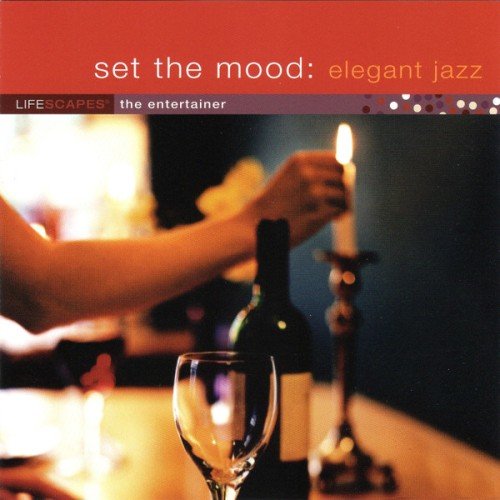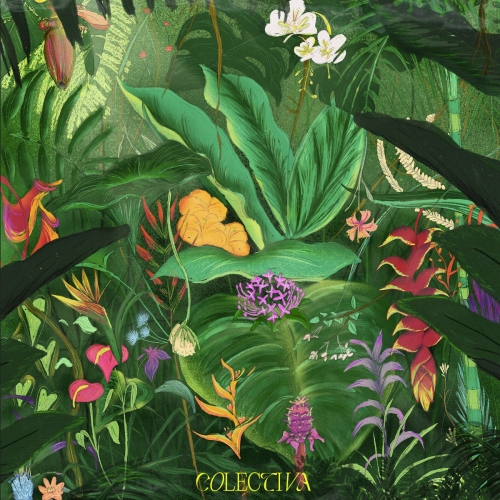Necronomicon - Tips Zum Selbstmord (Reissue) (1972/2004)
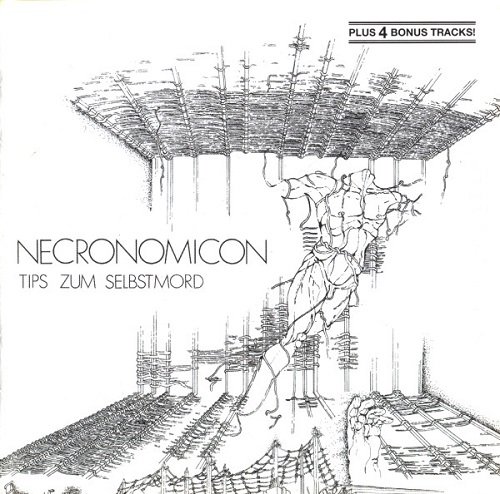
Artist: Necronomicon
Title: Tips Zum Selbstmord
Year Of Release: 1972/2004
Label: Garden Of Delights
Genre: Krautrock, Prog Rock
Quality: APE (image, .cue, log)
Total Time: 01:19:13
Total Size: 477 Mb (scans)
WebSite: Album Preview
Tracklist:Title: Tips Zum Selbstmord
Year Of Release: 1972/2004
Label: Garden Of Delights
Genre: Krautrock, Prog Rock
Quality: APE (image, .cue, log)
Total Time: 01:19:13
Total Size: 477 Mb (scans)
WebSite: Album Preview
1. Prolog (7:30)
2. Requiem Der Natur (10:49)
3. Tips Zum Selbstmord (4:45)
4. Die Stadt (7:18)
5. In Memoriam (6:56)
6. Requiem Vom Ende (7:47)
Bonus Tracks:
07. Dem Frieden Und Den Menschen (10:10)
08. Wenn Die Haifische Menschen Waren (7:37)
09. Haifische. Geadanken (7:25)
10. Wiegenlied (8:30)
Line-up:
Walter Sturm / Guitar, Vocals
Norbert Breuer / Guitar, Vocals
Harald Bernhard / Drums
Bernhard Hocks / Bass, Vocals
Fistus Dickmann / Organ, Synth, Vocals
Necronomicon were founded in 1971 in Aachen, West Germany, near the Belgium and Netherlands border, by Norbert Breuer, Harald and Walter Sturm, later recruiting Fistus Dickmann and bassist Detlev Hakenbeck. In February 1972, Hakenbeck was replaced by Bernhard Hocks, and a legend was born.
In late 1972, after recording their album, Necronomicon went through some lineup changes; Sturm quit to join Rufus Zuphall, while Dieter Ose replaced Dickmann on organ and keyboards, and Gerd Libber replaced Hocks on bass. Throughout 1973 they worked on new material, and some of their compositions at this time were nearly an hour long, and almost impossible to play live, and the band found themselves having to edited them down to a length of 10 to 15 minutes.
In 1974, Sturm returned to the band, and the group recorded a demo cassette live in their living room. The group may have existed as late as 1981 though no other recordings were made.
In 1990 the Little Wing of Refugees label released the 4-record set Vier Kapitel that included Tips Zum Selbstmord, two records worth of live material from the early days in 1971, including a demo performance at the Mensa, Aachen - and 45-minutes from the 1974 cassette - the only surviving source. Little Wing eventually released Tips Zum Selbstmord by itself on CD in 1996 with a generic cover.
The name Necronomicon came from the infamous novel by H.P. Lovecraft, who was also responsible for works such as The Call of Cthulu, which inspired Metallica to write a song of the same name. The Necronomicon, or Book of the Dead, is an inspired works of occult fiction, mainly based on real ancient sources, that many Lovecraft fans claim is non-fictional. There is to this day a shroud of mystery and dark aura around this book, which claims to describe all the kinds of horror on earth.
The music of Necronomicon, then, is in the same vein - in a similar style to Grobschnitt or Amon Duul II with the heaviness of Uriah Heep and the Political awareness of Floh De Cologne. It reflects the nightmarish Hieronymos Bosch-style cover art of their one and only album, created by Bernhard Hocks, and the apocalyptical visions presented in the lyrics.
The subject-matter of the lyrics, whilst presented in an apocalyptical fashion is derived from the title "Tips Zum Selbstmord" (How To Commit Suicide). Rather than being some kind of angst-driven prattle of "misunderstood" teenagers, it deals with how mankind are destroying the environment on which we depend.
"Tips Zum Selbstmord" was recorded in 1972 in a small studio in Kerkrade and produced by Carl Lindstrom. Remarkably, the album was recorded on just two tracks, and the band performed live in the studio. Like bands such as Gaa or Eulenspygel, Necronomicon chose to sing all the songs in their native German, which was tantamount to commercial suicide - but fitting for a band beyond compromise like Necronomicon.
The album itself is a legend among prog rock collectors - especially collectors of Krautrock, having chaged hands for up to $2,200. For a start, it's impossibly rare, there being only 500 numbered copies printed on the original Best Prehodi label, and even the recent fully accurate repress was limited to 500 numbered copies and circulated by Walter Sturm himself. Although not the only album to have had a very limited run, the original holds the dubious status of one of the most sought-after albums of all time.
The artwork of Harald Bernhard, depicting nightmarish images of tortured bodies and anguished faces, is presented in a package that opens out into a cross, made of 6 panels, each of which contains a drawing representing each of the 6 tracks on the album. The 6 tracks form a cyclic concept that ties in with the artwork to make a conceptually complete package.
If you decide to seek a copy of this album, be aware that there have been several unofficial represses of this album, which do not have the original packaging, and did not have access to the master tapes, so the quality of these bootlege tends to be poor to say the least.
The little Wing boxset comes with a lavish booklet with more artwork from Harald Bernhard and is similarly limited to 500 copies.
In late 1972, after recording their album, Necronomicon went through some lineup changes; Sturm quit to join Rufus Zuphall, while Dieter Ose replaced Dickmann on organ and keyboards, and Gerd Libber replaced Hocks on bass. Throughout 1973 they worked on new material, and some of their compositions at this time were nearly an hour long, and almost impossible to play live, and the band found themselves having to edited them down to a length of 10 to 15 minutes.
In 1974, Sturm returned to the band, and the group recorded a demo cassette live in their living room. The group may have existed as late as 1981 though no other recordings were made.
In 1990 the Little Wing of Refugees label released the 4-record set Vier Kapitel that included Tips Zum Selbstmord, two records worth of live material from the early days in 1971, including a demo performance at the Mensa, Aachen - and 45-minutes from the 1974 cassette - the only surviving source. Little Wing eventually released Tips Zum Selbstmord by itself on CD in 1996 with a generic cover.
The name Necronomicon came from the infamous novel by H.P. Lovecraft, who was also responsible for works such as The Call of Cthulu, which inspired Metallica to write a song of the same name. The Necronomicon, or Book of the Dead, is an inspired works of occult fiction, mainly based on real ancient sources, that many Lovecraft fans claim is non-fictional. There is to this day a shroud of mystery and dark aura around this book, which claims to describe all the kinds of horror on earth.
The music of Necronomicon, then, is in the same vein - in a similar style to Grobschnitt or Amon Duul II with the heaviness of Uriah Heep and the Political awareness of Floh De Cologne. It reflects the nightmarish Hieronymos Bosch-style cover art of their one and only album, created by Bernhard Hocks, and the apocalyptical visions presented in the lyrics.
The subject-matter of the lyrics, whilst presented in an apocalyptical fashion is derived from the title "Tips Zum Selbstmord" (How To Commit Suicide). Rather than being some kind of angst-driven prattle of "misunderstood" teenagers, it deals with how mankind are destroying the environment on which we depend.
"Tips Zum Selbstmord" was recorded in 1972 in a small studio in Kerkrade and produced by Carl Lindstrom. Remarkably, the album was recorded on just two tracks, and the band performed live in the studio. Like bands such as Gaa or Eulenspygel, Necronomicon chose to sing all the songs in their native German, which was tantamount to commercial suicide - but fitting for a band beyond compromise like Necronomicon.
The album itself is a legend among prog rock collectors - especially collectors of Krautrock, having chaged hands for up to $2,200. For a start, it's impossibly rare, there being only 500 numbered copies printed on the original Best Prehodi label, and even the recent fully accurate repress was limited to 500 numbered copies and circulated by Walter Sturm himself. Although not the only album to have had a very limited run, the original holds the dubious status of one of the most sought-after albums of all time.
The artwork of Harald Bernhard, depicting nightmarish images of tortured bodies and anguished faces, is presented in a package that opens out into a cross, made of 6 panels, each of which contains a drawing representing each of the 6 tracks on the album. The 6 tracks form a cyclic concept that ties in with the artwork to make a conceptually complete package.
If you decide to seek a copy of this album, be aware that there have been several unofficial represses of this album, which do not have the original packaging, and did not have access to the master tapes, so the quality of these bootlege tends to be poor to say the least.
The little Wing boxset comes with a lavish booklet with more artwork from Harald Bernhard and is similarly limited to 500 copies.
![Coco Chatru Quartet - Lost Christmas (2025) [Hi-Res] Coco Chatru Quartet - Lost Christmas (2025) [Hi-Res]](https://www.dibpic.com/uploads/posts/2025-12/1765719561_coco-chatru-quartet-lost-christmas-2025.jpg)
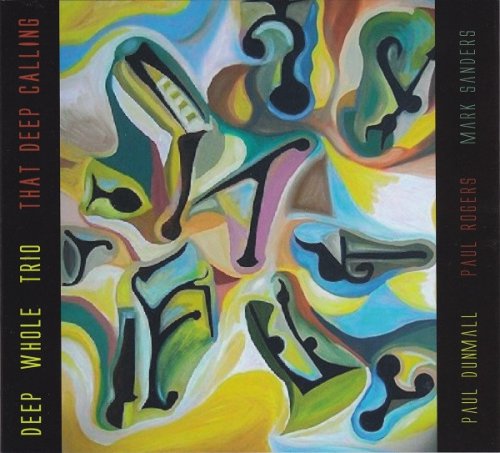
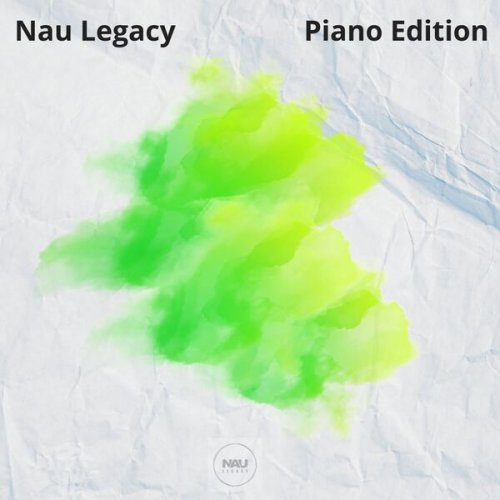
![Koldo Munné & 1520's Ensemble - Live at Jamboree Live Music (2025) [Hi-Res] Koldo Munné & 1520's Ensemble - Live at Jamboree Live Music (2025) [Hi-Res]](https://www.dibpic.com/uploads/posts/2025-12/1765846749_ck2b0xbsb8jna_600.jpg)
